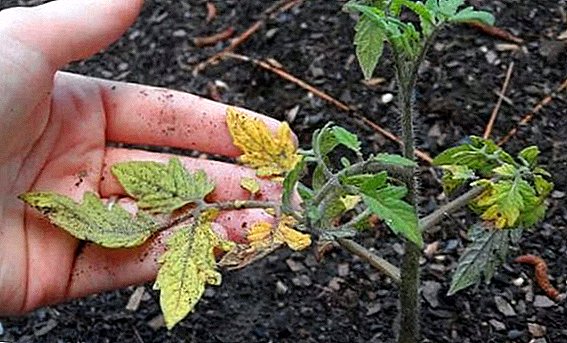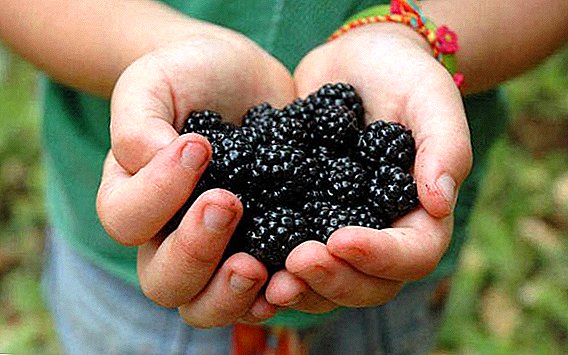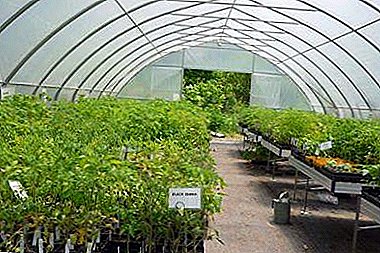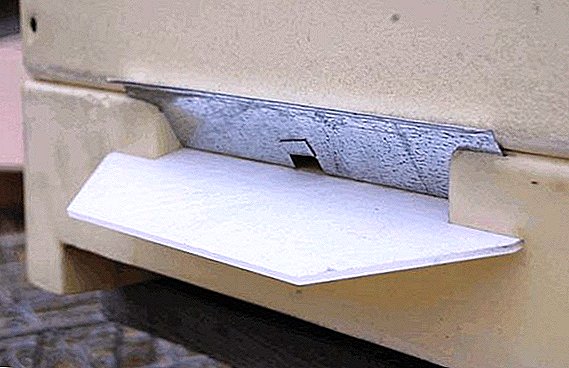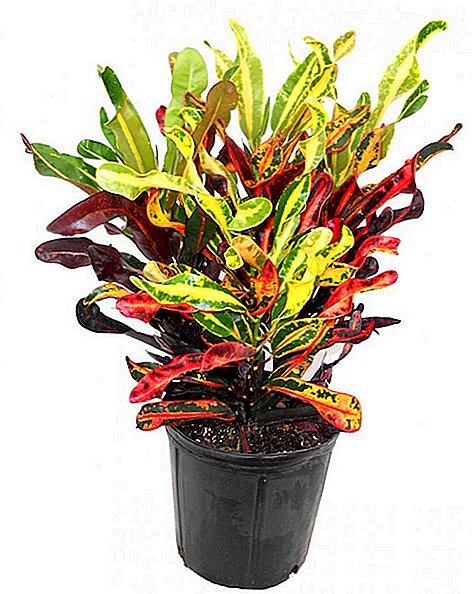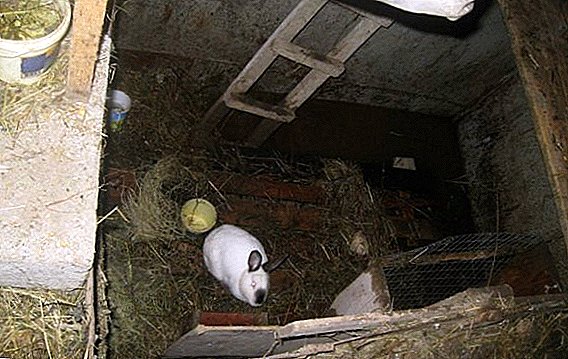 Many breeders are looking for ways to simplify and cheapen the maintenance of animals. In the old days, the pit method was popular, but modern farmers have improved it a bit.
Many breeders are looking for ways to simplify and cheapen the maintenance of animals. In the old days, the pit method was popular, but modern farmers have improved it a bit.
What are the advantages and disadvantages of this method - consider in this article.
Pros and cons of the pit rabbits
The advantages of pit keeping rabbits include:
- The almost complete lack of housing costs for animals.
- The durability of housing, it does not wear out.
- Costs associated with raising animals are minimized.
- Animals are created the conditions in which they live in the wild.
- In the burrows, eared saves from heat and frost.
- There is almost no risk of getting sick with myxomatosis, which is carried by mosquitoes.
- Digging holes is a type of physical activity, that is, improves the health of animals.
- There is no need to occupy a large area under the cells.
- They multiply better.
- Male rarely eats baby rabbits.
- Rabbits feed on their own and others 'rabbits' milk.
- No drafts.
 The disadvantages of this content rabbits include:
The disadvantages of this content rabbits include:
- It is impossible to count the exact number of animals.
- Attempts to correct the diet of individual animals are hopeless.
- There is no possibility to control the amount of food eaten by individual animals.
- There is no way to ensure normal sanitary conditions. For this reason, there may be problems with the sanitary service when trying to sell animal meat.
- To vaccinate animals is almost impossible.
- The risk of uncontrollable morbidity increases.
- As a result of the fact that almost all the livestock are relatives, the quality of the herd deteriorates (small size, various diseases, congenital mutilation).
- It is difficult to reject from raising animals that should not be allowed in breeding.
- Animals become more wild and fearful.
- Hides are injured due to male fights, the method is not suitable for fur rabbits.
- Since it is difficult to determine the age of the animal, it can go to slaughter later than the allotted time, that is, the cost of feeding will increase.
- This method is not suitable for leased land, as in case of a break in the contractual relationship, it will be problematic to relocate animals.
- At first, the death of the offspring is possible, as the females are not accustomed to giving birth and growing rabbits in natural conditions.
- There is a danger of flooding by groundwater, especially in spring.
- High rate of spread of diseases, a high probability of death as a result of the epidemic.

Important! Do not fear for a house, trees, a shed, a well, a toilet, etc. located in the immediate vicinity of the pit. - they will not be able to undermine buildings and trees until they fail;
How to choose a place for the pit
To choose the right place for the pit, you must adhere to the following conditions:
- At this point, groundwater should be low, and meltwater should reach only a meter deep.
- As such a place is suitable hill, then the probability of flooding the pit is less.
- The territory for the pit is better to choose in a shaded place to protect animals from the heat.
- If there are several pits, the distance between them should not be less than 20 m, and preferably 30 m.
- The pit can be placed in the cellar or basement.
 Pit can be made in the cellar or basement
Pit can be made in the cellar or basement
How to make and arrange housing with their own hands
Accommodation for rabbits equip thus:
- Dig a hole with a depth of not less than 1 m.
- Depending on the planned size of the livestock choose the width and length of the pit. For 100-200 animals it is recommended not less than 2 m by 2 m.
- At the bottom of the pit lay a layer of sand 20 cm thick.
- On the sand with a layer of 2 cm lay a solution of cement, mixed with sand, after hardening, sprinkle with straw. Instead of cement, you can use a flat grid of metal, on which it will be convenient to scrape with a shovel, when it is time to clean the manure.
- The floor is covered with straw.
- The walls are lined with material that animals cannot gnaw through (for example, slate, bricks) so that the walls do not collapse.
- In one of the walls, a gap is left unclosed, in which a spade at a height of 10 cm from the bottom is dug a hole in a straight or downward direction about the bayonet of a shovel to define the direction for digging holes. Such a height will allow not to drain the feces into the hole and not to fill it with earth when the animals begin to dig. The width of the hole must be such that they fit no less than 2 rabbits, otherwise a crush may occur.
- Near the opening, mount the valve so that the rabbits can be caught.
- Above the pit, at a height of about 1.2 m, a roof is being constructed and it is tilted on the side opposite the hole. The roof must be 50 cm larger than the pit so that water does not flow into it at the edges. Use materials that will not be very hot in the heat.
- On the surface near the pit lay a small layer of clay, so as not to wash away the water.
- For better ventilation from the hole, a pipe is discharged to the outside through which fresh air will flow.
- Along the perimeter of the pit they put a net fence so that no one would hunt the rabbits, with a door that is locked to the castle from thieves.
- Feeding troughs and troughs will be installed far away from the entrance so that they will not be covered with earth on different walls. Height is selected in such a way that the bunnies can reach them.


Important! If the hole is in the cellar or basement, you need to provide a dim artificial light to provide animals daylight, otherwise they reproduce poorly. You can also make a roof with a window.
Video: How to build a pit for rabbits
How to choose the right breed
For such content will not work:
- Rabbits of fur and large breeds. Fights harm the pelts, and large rabbits will be hard in the burrows.
- Animals over 1 year old kept in cages. They are already accustomed to the cellular content and the burrowing instinct is weak.
Read about the rabbit captive content.
The ideal option would be animals that were already kept in cages, as well as females from fertile mothers. It is believed that of all breeds of rabbits for the pit contents correspond the most:
- Butterfly.
- Silvery.
- Soviet chinchilla.
- Californian.

We settle rabbits in a hole
The best age for the settlement of rabbits in a hole - not earlier than 3 and not older than 5 months. Do not settle there at once a large number of animals, it is better to start with 1 male and 3-4 females who have not yet given birth in a cage.
Important! If the rabbit has already given birth in a cage, then she is more likely to give birth in a hole or near an exit from a hole, then adult animals can trample rabbits.
The digging of holes is done by the females. Rabbits who lived in an open-air cage or hole before, adapt to the process more easily. Two males, settled in a hole at the same time, can become hostile. The one who is stronger will not allow the weak to approach the females, the feeders, can block the exit from the hole. Before settling it is recommended to vaccinate animals.
Video: How to populate rabbits in a hole
What to feed
There are no differences in the nutrition of rabbits in the pit and the cage. Rabbit diet includes:
- Succulent feed (vegetables and tops).
- Greens (grass).
- Rough feed (hay, straw, twigs).
- Grain or feed.
- Fodder of animal origin (bone meal, milk without fat, buttermilk, whey, fish oil).
- Leftovers from the home table, but not sour or moldy.
- Vitamins and minerals.
Find out whether it is possible to give rabbits tomatoes, pears, wormwood, peas, bread, bran, corn, pumpkin.
If in summer the main emphasis in feeding is on different types of green food (about 0.5 kg), and roughage and grain are given in the amount of about 50 g per individual, then in winter, the animals need to increase the moisture content in the diet, for this they are given more vegetables and silage.  Vitamins and nutrients rabbit get through salt, chalk, bone, meat or fish meal, fish oil, yeast, wheat germ, pine meal. Vitamin supplements are well known: Chiktonik, Gammatonik, Prodevit, E-Selenium and others.
Vitamins and nutrients rabbit get through salt, chalk, bone, meat or fish meal, fish oil, yeast, wheat germ, pine meal. Vitamin supplements are well known: Chiktonik, Gammatonik, Prodevit, E-Selenium and others.
It is useful to know what vitamins are necessary for rabbits.
The amount of feed should be sufficient so that the animals do not live half-starving. You can feed them constantly or feed them 2-3 times a day, giving a signal (bell, whistle, etc.). With an insufficient amount of food, hungry rabbits can crush each other, getting out of the hole at the call of the owner.
Animals in drinking bowls should constantly have water that changes every day.  You can not feed the rabbits:
You can not feed the rabbits:
- beetroot;
- broom branches, elderberry, wolfberry, wild rosemary, fruit trees with stone fruit;
- celandine;
- digitalis;
- spurge;
- poisonous milestone;
- hemlock;
- Hellebore;
- feed for birds.
Is it necessary to warm the pit before winter
In a temperate climate, the pit does not need warming, as it is warmed by the warmth of the earth. The rabbits do not suffer from the cold, the paws are not cold, the water in the troughs does not turn into ice.  In a region with severe frosts, during the construction of the pit, it is necessary to provide for wall insulation (for example, clogged bottles), it is also advisable to warm the top of the pit and the ground around it during the winter period.
In a region with severe frosts, during the construction of the pit, it is necessary to provide for wall insulation (for example, clogged bottles), it is also advisable to warm the top of the pit and the ground around it during the winter period.
Check out the features of feeding rabbits in the winter.
In permafrost conditions, keeping rabbits in a hole will not work.
Breeding rabbits
In the pit, rabbits breed quickly, the rabbits between the clans almost do not rest, although it is not possible to control mating, therefore breeding animals in the pit is almost impossible.
In order to exclude defective animals from reproduction, it is recommended to identify and discard them in time before the beginning of puberty.  It is also recommended to withdraw three-month-old males for some time, because during this period cruel fights begin between them, as well as with older males. It is advisable to get rid of the most cocky in time to reduce the number of conflicts.
It is also recommended to withdraw three-month-old males for some time, because during this period cruel fights begin between them, as well as with older males. It is advisable to get rid of the most cocky in time to reduce the number of conflicts.
For normal breeding without serious problems, it is necessary to control the ratio between males and females - there should be no less than 3 and no more than 6 females per 1 male.
The little rabbits take better care of their offspring, and when the little rabbits emerge from the hole, they begin to suck the milk of other females.
Did you know? Rabbits can simultaneously harbor 2 litters of different ages due to the presence of two parts of the uterus, so they are fully capable of giving birth again 2 weeks after the previous birth.
The problem of incest, which leads to degeneration, diseases, defects, small sizes of rabbits, can be solved in the following ways:
- To contain a large number of animals, then the probability of incest is reduced.
- To contain a sufficient number of males - the smaller the males, the greater the number of rabbits will become relatives.
- At least once a year to buy a new male.
- In the presence of 2 holes at least once a year to change the males from one pit to another.
- Populate animals from different sources in the pit.
- Populate 1 male with females in the pit, remove the males from the rabbits, and change the male once every six months. Or withdraw all the females from the rabbits that appeared, and after 2 years, replace the old rabbits with young, at the same time taking the male.
How to catch a rabbit in a hole
To catch the desired individual in the pit, you can resort to one of the following methods:
- If the rabbits run wild and are afraid of the owner, carefully watching from the window above, you need to lower the valve at the entrance to the hole when the desired rabbit comes out. This is best done during feeding.
- To accustom to the sound signal during the start of feeding, more often to get into the pit, to feed the most delicious food from the hands. When the desired rabbit comes close, pick it up.
 Gate valve for rabbit pit
Gate valve for rabbit pit
Possible problems with breeding rabbits in the pit
The most common problems that arise when breeding rabbits in a pit:
- animals do not dig burrows;
- climbed out or undermined the ground in a barn with livestock;
- rats started in the pit.
Rabbits do not want to dig holes
First of all, it is necessary to take into account that the burrows are digging pregnant females so that it is possible to hide offspring. In order for them to start digging, you can apply the following recommendations:
- Run rabbits that used to live in a hole.
- Run into the pit of young non-giving females.
- Dig the beginning burrow shovel.
- To fence off near the entrance to the hole a small area with a grid so that the rabbits are cramped.

Did you know? The stages of intoxication in the Aztecs were measured by rabbits, and a maximum of 400 rabbits.
Rabbits have found their way to freedom
Rabbits rarely dig holes out, but sometimes this happens if the pit is not deep enough or high groundwater levels. Far in this case, they do not run away, if they are afraid, they climb back into the hole. To prevent such a situation, it is recommended to comply with the following requirements:
- The depth of the pit should not be less than 1 m, optimally - 1.5 m.
- When digging the beginning of the burrow, set the direction straight or down.
- Around the pit at a depth of about two bayonet spade lay the grid.
- Do not equip the pit in places with high groundwater levels.
- Try that in the place where the rabbits will dig burrows, the ground is not too loose and sandy.
- If you find a way out to the surface, fill it with concrete.
Read about rabbits content.
Rats appeared
With the cellular content of rabbits, rats can cause them a lot of harm by eating rabbits, biting off the paws of adult animals, eating and infecting their food. When the pit content of such problems is less, as adult rabbits in the pit bold and begin to chase the rats themselves, but they are still able to wait for the young single rabbit and strangle him.  therefore it is necessary to get rid of rats. The modern chemical industry has developed a sufficient number of means to combat them - Penokumarin, Zookumarin, Ratindan. You can use traditional methods - mix finely pounded glass into fried eggs with onions, wrap in paper, then cellophane and wrap with string.
therefore it is necessary to get rid of rats. The modern chemical industry has developed a sufficient number of means to combat them - Penokumarin, Zookumarin, Ratindan. You can use traditional methods - mix finely pounded glass into fried eggs with onions, wrap in paper, then cellophane and wrap with string.
The disadvantage of these methods is that they can kill rabbits along with rats. The safest method is the ultrasonic control method - a special device on which it is indicated that it is designed to fight rats (and not rodents), sends an alarm signal for pests, and they leave the territory.
We recommend to learn how to get rid of rats in the barn, cellar, basement, private house, as well as get acquainted with the peculiarities of rodenticide use for the destruction of rats.
Useful tips for breeders
Rabbit breeders, who decided to try this method of housekeeping, can recommend a few tricks for a successful result:
- Equipping several holes, keep in mind that the length of each can reach 20 m, so they can be connected.
- Do not worry about the fact that the males do not want to dig holes, but rest instead in a hole - the holes dig females.
- To arouse the digging instinct, populate the birthless rabbit who has reached puberty, but not older than 5 months. Or buy animals that used to live in a hole or aviary.
- About once every six months, change males to avoid the effects of incest.
- Gradually increase the amount of feed and water so that the livestock does not go hungry.
- Periodically slaughter rabbits so that the dimensions of the pit are sufficient for their number.
- Males should be at least three times less than females.
- Animals must have free access to food and water so that they do not fight.
- Feeding trough sizes should be such that all animals can eat enough.
- Do not put food near the burrow so that it does not get clogged. Attach feed containers to one of the walls.
- If you make a hole in the cellar or basement, wall the walls, dig through the entrance, place a large cage with a hole in the entrance, under it there is a pan for excrement.
- In order for the rabbits not to run wild, climb into their pit, sprinkling food, call them up with a beep, let's get some kinds of feed from the hands.
- Provide a low light day for the rabbits to more actively breed.
- It makes no sense to keep females who do not bring offspring (they go on to feed them for a long time without rabbits) and feed them, but before slaughter you need to check your nipples so that the babies in the hole are left without milk.
- To avoid unpleasant odors, update your straw bedding at least once a week.
- Cage males who have reached the age of 3 months in a cage to avoid fights.
- To trace the offspring, populate the females of different color - it will be better to see whose bunnies.
- In order to avoid an epidemic, vaccinate those you can catch, especially tribal animals. Even if all of them cannot be vaccinated, in case of an epidemic they will survive.
- Populate the females whose mothers were good at breeding rabbits.
- If the number of rabbits has greatly increased and the size of the pit is no longer suitable for them, arrange for continuous feeding so that there is no crush. But note that the rabbits will be wild.
- Do not interfere in the disassembly between animals, if any instance begins to make life more difficult for others, hammer it, otherwise they will become even more vicious.
- Чтобы легче было поймать конкретного животного, кормушки для самого вкусного корма разместите как можно дальше от входа в нору, тогда оно не успеет убежать.
- Один вход в нору сильно облегчает процесс поимки кроликов, его легче перекрыть, чем несколько входов.
- If you want to teach rabbits to fight rats, install small feeders. Then they will learn to fight each other and start chasing rats. After the trough it is necessary to put a larger size. You can also run a few large adult krols.
- So that the rabbits do not scatter much in different directions, over a given radius to a depth of 2 m, you can bury the net. The net can also be buried flat, about 0.5 m deep, if you are afraid that animals will dig up the path.
- If the female carries hay and fluff in her mouth, she prepares for childbirth.
- If the female has sharply lost weight, fluff is pulled out on her stomach - she brought the offspring into the light.
- You should not make 2 holes in one pit, even in opposite directions - they can connect.



Did you know? The body length of a Darius rabbit, which is contained in a UK resident, has reached 1 m 30 cm.
Thus, the method of keeping rabbits in a hole is suitable for those who plan to keep a population of 100-200 animals, have a basement, a cellar or a land plot, want to bring the rabbit breeding as close as possible to natural conditions. However, this does not mean that in this case it will not be necessary to put any effort, the problem of degenerate offspring from incest will be especially acute. However, taking into account the above recommendations, all the disadvantages can be minimized.
Reviews
It also increases the number of trampled fry (which are very small). Those. it turns out that the number of females increases, and the rabbits arrive poorly. Perhaps this is due to the fact that the holes are still not deep enough (the pit is less than a year), and perhaps due to the fact that at the entrance to the hole there is too much movement - almost all trampled kids in this “zone”.
So far, I see a ceiling of 50pcs (all together) - this amount can be provided with normal conditions of detention, and the return from each female (5-6 pcs) will be normal. This year I want to reach the amount of 100 pieces, but I don’t know how.
To date, there are 5 females in the pit (1 stable and 4 young), 1 male and a dozen and a half rabbits (2 okrol). Rabbits at the age of 2 months I translate into an aviary. The male with females is constant, but he has not yet seen offspring from three young females. With this amount of cleaning once a week is enough with the head (half rack).



